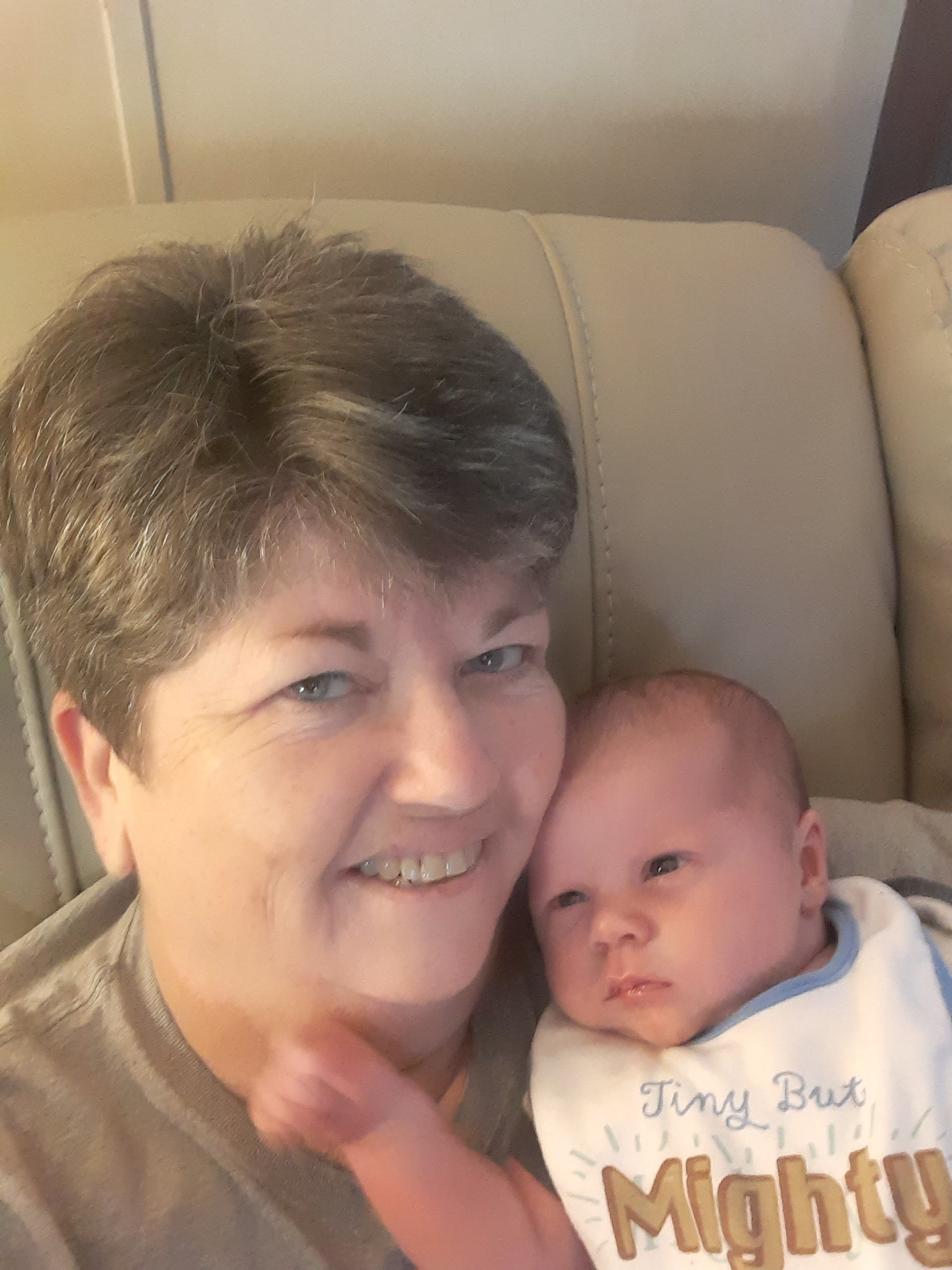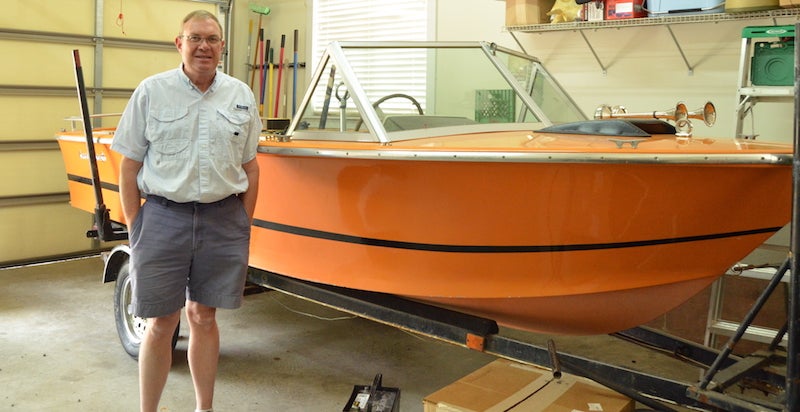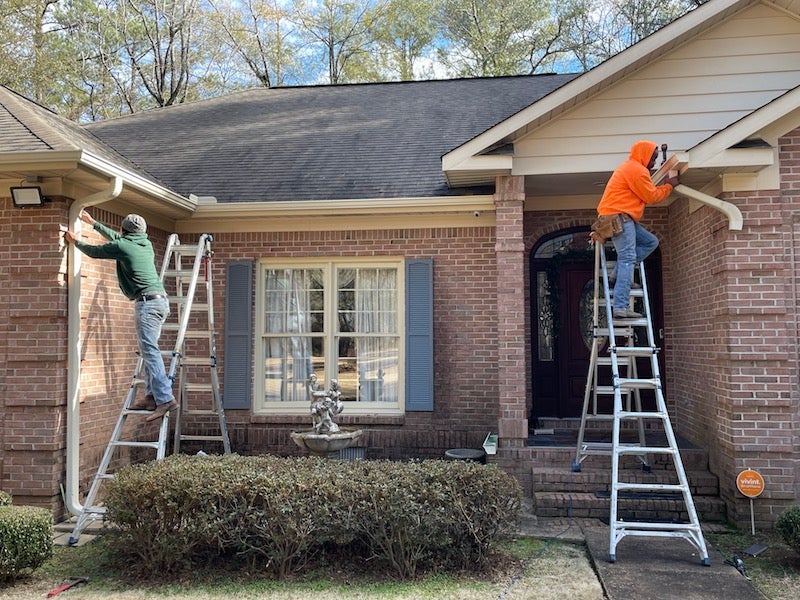Breast cancer awareness: Cancer patient thankful for early detection
Published 2:32 pm Friday, October 7, 2022

- Vicky Turner holds her great-nephew Jenson Lane. Turner was diagnosed with an aggressive form of cancer in the very early stages and has a low chance of it returning. (VICKY TURNER | CONTRIBUTED)
|
Getting your Trinity Audio player ready...
|
By JOYANNA LOVE | Managing Editor
Early detection has given breast cancer patient Vicky Turner of Clanton a good chance of a very good outcome.
Ahead of her annual mammogram in Montgomery in March, Turner was scratching an itch when she found a knot near the top of her right breast.
“It concerned me so I called them first thing Monday and told them what I found, and I was concerned about it, so we went to try to set up to have somebody check everything to see what it was,” Turner said.
After there was an issue with her initial appointment date not being scheduled by an office in Montgomery, she confirmed that St. Vincent’s Chilton could do the diagnostic mammogram that was needed and had a mammogram and an ultrasound.
Turner had been concerned that rescheduling would be detrimental.
“(Radiologist) Dr. (Michael) Rodriguez wasn’t concerned with the lump, he thought it was some tissue or something, but he noticed something on my chest wall, and he was real concerned with that,” Turner said.
A biopsy was recommended, which Turner had done at Jackson Imaging in Montgomery.
“They said it was like half the size of the staple,” Turner said.
She had the biopsy done on a Monday in June and received a phone call with results that Friday.
“I could tell in his voice before he ever said anything, but he told me … it is cancer,” Turner said. “It’s called invasive lobular carcinoma.”
Only about 10% of those who are diagnosed with breast cancer have this specific type.
After receiving the initial diagnosis, “I sat at my kitchen table, and I cried,” she said.
The cancer is considered aggressive, but Turner’s cancer was found in stage one.
Often this type of cancer is not detected until stage three or stage four after it has already spread to other parts of the body.
“Dr. Smith at Jackson Imaging … when he did the biopsy he told me, he said, ‘Dr. Rodriguez did a wonderful job because I can honestly say I don’t know as small as that was if any other radiologist would have caught that shadow,’” Turner said.
Turner was so thankful she went back to St. Vincent’s Chilton to let him know.
“I wanted him to know what that meant to me and how much I appreciated the fact that he found that so small and so early that it has given me a wonderful chance of wiping everything out, and it not coming back,” Turner said.
She also said she was thankful for the technicians and every one that did the tests while she was at St. Vincent’s Chilton.
Rodriguez is quick to share credit with technologist Stephanie Wise, who took the photos during the mammogram.
“She did a really good job, getting (an image) of all of the breast that she could,” Rodriguez said.
He said the back of the breast near the chest cavity can be hard to see in the four images available from a 2D mammogram.
Equipment upgrades at St. Vincent’s Chilton will soon switch to 3D mammograms, which will provide more pictures and information for radiologists to review. The plan is to have the equipment installed this month. Rodriguez said this will likely reduce the number of women that have to come back for a second mammogram just to get more information. A portion of the funding for this equipment is coming from Ascension St. Vincent’s Foundation.
Turner was referred to the UAB Clinic in Montgomery for surgery. When they went to do the surgery, all the surgeon found was the metal clip left during the biopsy to mark the site.
“There was no cancer there,” Turner said. “The lymph nodes that she took out those were cancer free.”
A bone density test and a CAT scan were done to see if the cancer had spread to other parts of the body. This specific bone density test was to see if the cancer had spread to her bones, which is “one of the first places it goes,” Turner said.
Turner received the result on Sept. 21.
“The only thing on the CAT scan that they saw was I have some very small nodules in the lower lobe of my right lung,” Turner said.
The nodules are thought to be from prior respiratory illnesses. However, another CAT scan has been scheduled to monitor them.
She began her 20 radiation treatments on Sept. 29, and she will have to take a prescription daily for five years.
Turner had been vigilant about going to her yearly mammogram and encourages woman in the recommended age range to get them on a yearly basis.
She said this is important so anything can be detected early, which is often crucial for survival. Rodriguez said annual mammograms for women 40 and older help doctors see if there are any changes from prior years.
“If your breast is changing, then there might be something concerning developing,” Rodriguez said.
Anything with an irregular shape on the mammogram can be cause for further testing.
Mammograms are usually covered by insurance, and St. Vincent’s Chilton does have a self-pay option that Rodriguez said is affordable for those without insurance.
During her cancer journey, Turner’s close friend and fellow cancer patient Donna told her that a positive attitude was crucial.
“I understood a lot from what she had been through, but it is so different when it’s you,” Turner said.
She said the two have been encouraging each other.
“I just prayed and put it in God’s hands,” Turner said. “That was the only way that I knew how to handle it.”
Turner has a good prognosis of their being a low chance of the cancer returning. However, she is making some changes to make healthier food choices and increasing her exercise.
“I feel very blessed because I have seen a lot of others that have not had that chance, they have had a very hard rough time with it,” Turner said.






